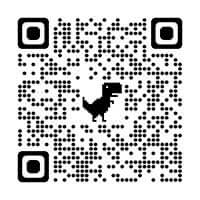Sleep apnea is a sleep disorder characterized by abnormal breathing- often in extended pauses. These breathing lapses can affect the quality of sleep and the body’s oxygen supply.
Increasing evidence shows that sleep apnea can contribute to the risk of developing severe health problems such as hypertension, heart disease, and diabetes. In 2021, a study found the association of sleep apnea with the risk of contracting severe illness from coronavirus disease 2019 (COVID-19), resulting in hospitalization and mortality.
Understanding these COVID risk factors can help us decide on the best treatment and preventive actions for sleep apnea and COVID-19.
Obstructive Sleep Apnea (OSA)
The study points to a prevalent type of sleep apnea known as Obstructive Sleep Apnea (OSA). OSA occurs when throat muscles relax, narrowing or closing the airway. When inhaling, the brain detects breathing disruptions and wakes the body up to reopen the airway. This is why patients with sleep apnea often snort or gasp during sleep.
Sometimes it is too difficult to determine if a person has sleep apnea. But the most common signs experts look into are:
- Frequent, loud snoring
- Episodes when a person stops breathing while asleep
- Gasping for air during sleep
- Insomnia
- Excessive daytime sleepiness
- Waking with dry mouth
Children and adults are both at risk of being diagnosed with OSA. But certain factors significantly increase its risk. These include:
- Excessive weight is the main component contributing to sleep apnea. Fat deposits around the neck can narrow the airway when lying down.
- Genetic and family history also pose a risk of sleep apnea. There are instances where having a narrow throat and sleep apnea runs in the family.
- Using alcohol or sedatives can relax the throat muscle and increase the risk of sleep apnea.
- Smoking can also increase the severity of sleep apnea by increasing the amount of inflammation and fluid retention in the airway.
What Are COVID Risk Factors?
Most risk factors of COVID-19 are related to sleep apnea. Generally, older adults age 65 and above are at higher risk of getting severe COVID-19. These COVID risk factors increase if a person has underlying medical conditions.
Some of the medical conditions listed by the Center for Disease Control and Prevention (CDC) are:
- Diabetes
- Cardiac disease
- Hypertension
- Overweight and Obesity
- Asthma
- Pulmonary disease
It is essential to identify COVID risk factors and conditions that increase the risk of severe infections to stop the spread of COVID-19. If you are diagnosed with one of these listed medical conditions, consult your trusted medical professional for the best course of action to keep yourself safe from the risk factors of COVID-19.
How Are Sleep Apnea and COVID-19 Related?
No studies suggest patients with sleep apnea are more likely to test positive for COVID-19. However, sleep apnea and other breathing problems can amplify the severity of COVID-19, increasing the risk of hospitalization and mortality.
In the study conducted by Cleveland Clinic, adults with breathing disorders who tested positive for COVID-19 showed severe complications and clinical outcomes. The researchers proposed that screening for indications of sleep apnea, particularly OSA, is beneficial in identifying individuals with a high risk of severe COVID-19 infection.
Since sleep apnea is one of many COVID risk factors, patients must take increased measures to manage it during the COVID-19 pandemic.
COVID and Sleep Apnea: Oral Appliance Therapy
In a community setting with higher risk factors for COVID-19 contamination, oral appliance therapy (OAT) is an effective treatment of OSA during the pandemic. OAT is considered a first-line treatment; it reduces the risk of air leakage and salivary spread by keeping the mouth closed.
How Does Oral Appliance Therapy Work?
Oral appliance therapy is a non-surgical apnea treatment using custom-fitted appliances. Its appearance is similar to a dental retainer. Dental appliances can open the airway during sleep for patients with mild to moderate obstructive sleep apnea.
Other benefits of oral appliance therapy include:
- A mask-less alternative that reduces the risk of viral particle spread
- Comfortable and easy to wear
- Easy to clean and disinfect
- Can be used when traveling
- Does not need electricity
- Beneficial for claustrophobic patients
Different types of OAT are designed for specific sets of sleep apnea and their side effects. Oral appliances fall into three main types:
1. Mandibular Advance Device (MAD)
This dental device gently shifts the lower jaw forward and down, preventing the tissues in the mouth and throat from blocking the airway.
2. Tongue Retaining Device (TRD)
Tongue retaining devices hold the tongue in place and prevent it from blocking the airway.
3. Hybrid Device
This is a combination of mandibular advance device and tongue retaining device. It gently forces the jaw forward and keeps the tongue in a neutral position.
Ask your doctor what oral appliance therapy is best to help you deal with COVID and sleep apnea. Your doctor may need to assess your condition first and determine which type of appliance will give the right solution to your sleep apnea and benefit the quality of your sleep.
Achieve Safer Sleep Apnea Treatment During COVID-19
Our dentists at Sunrise Dentistry have the knowledge and skills to help you achieve quality sleep. In Durango, CO dentists seriously abide by COVID safety guidelines when performing dental procedures.
We prepare, install, and adjust oral appliances to help you breathe well and sleep comfortably. If you are experiencing sleep apnea symptoms, book an appointment with us today.





